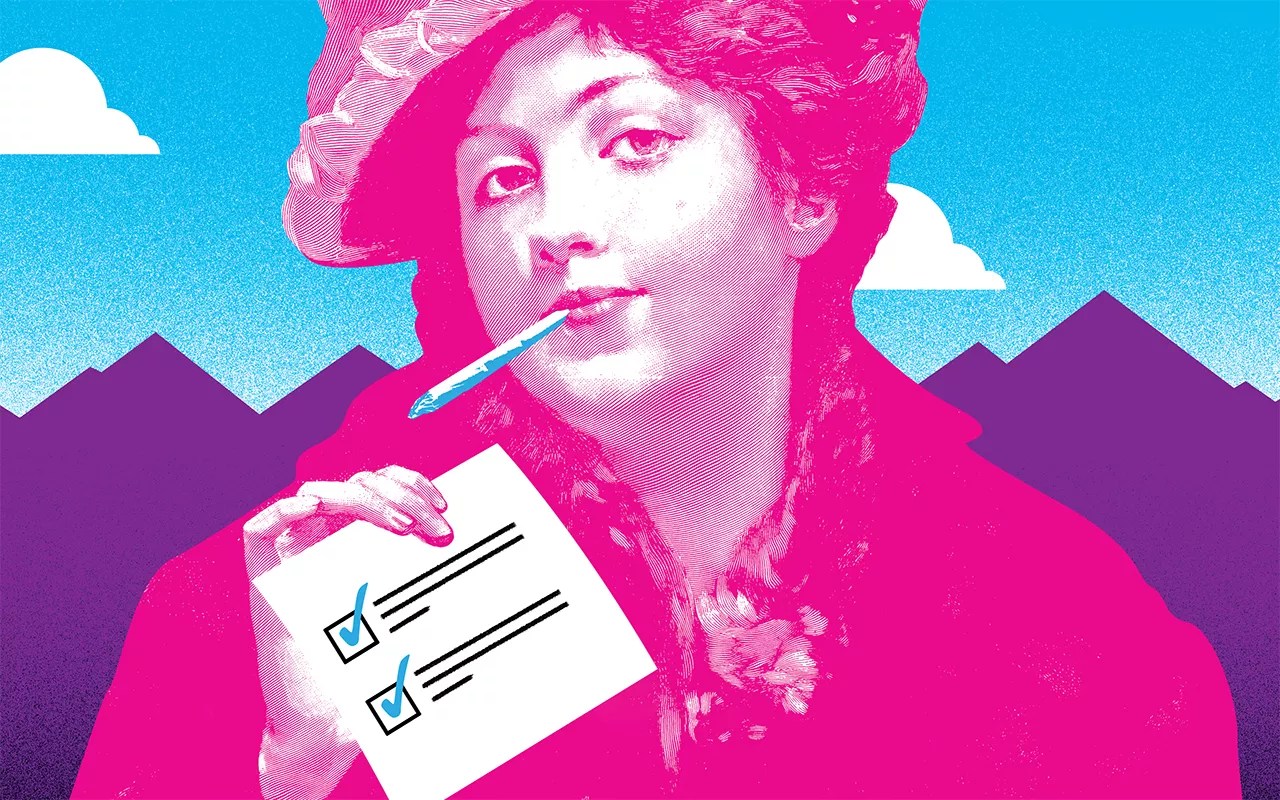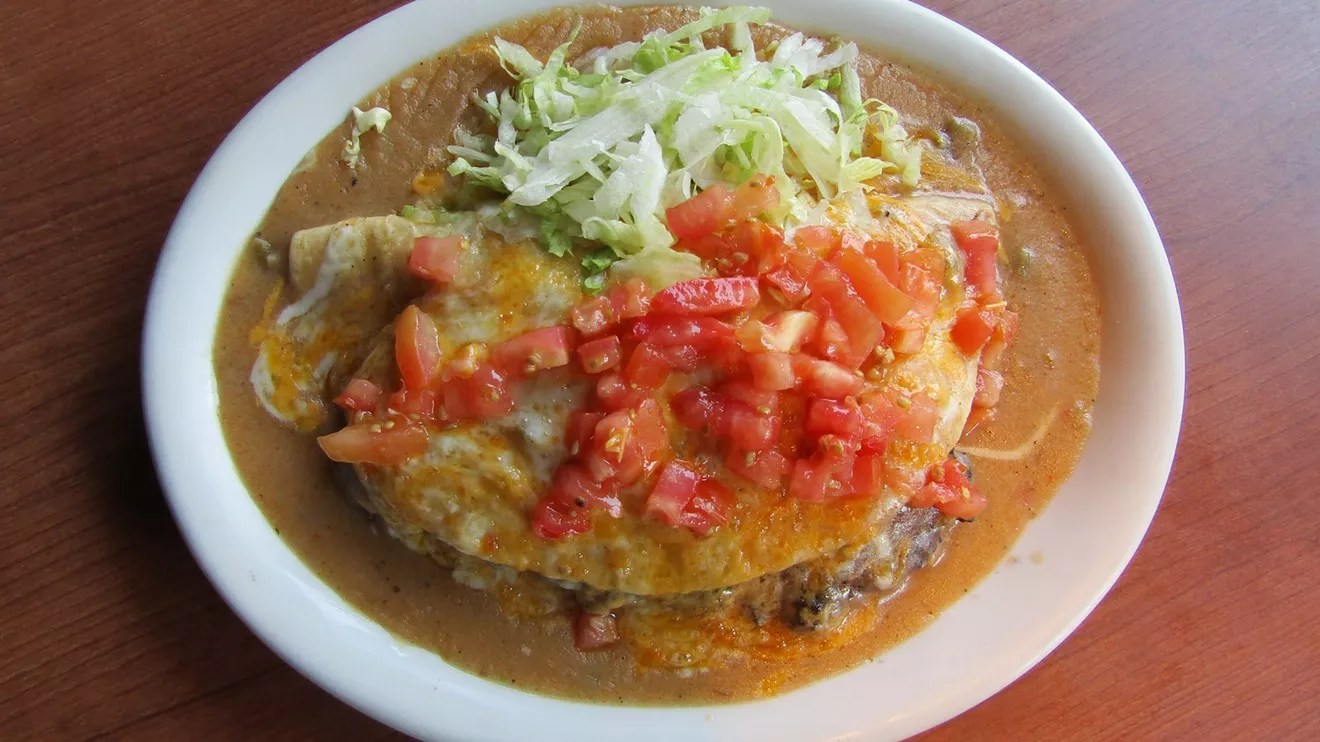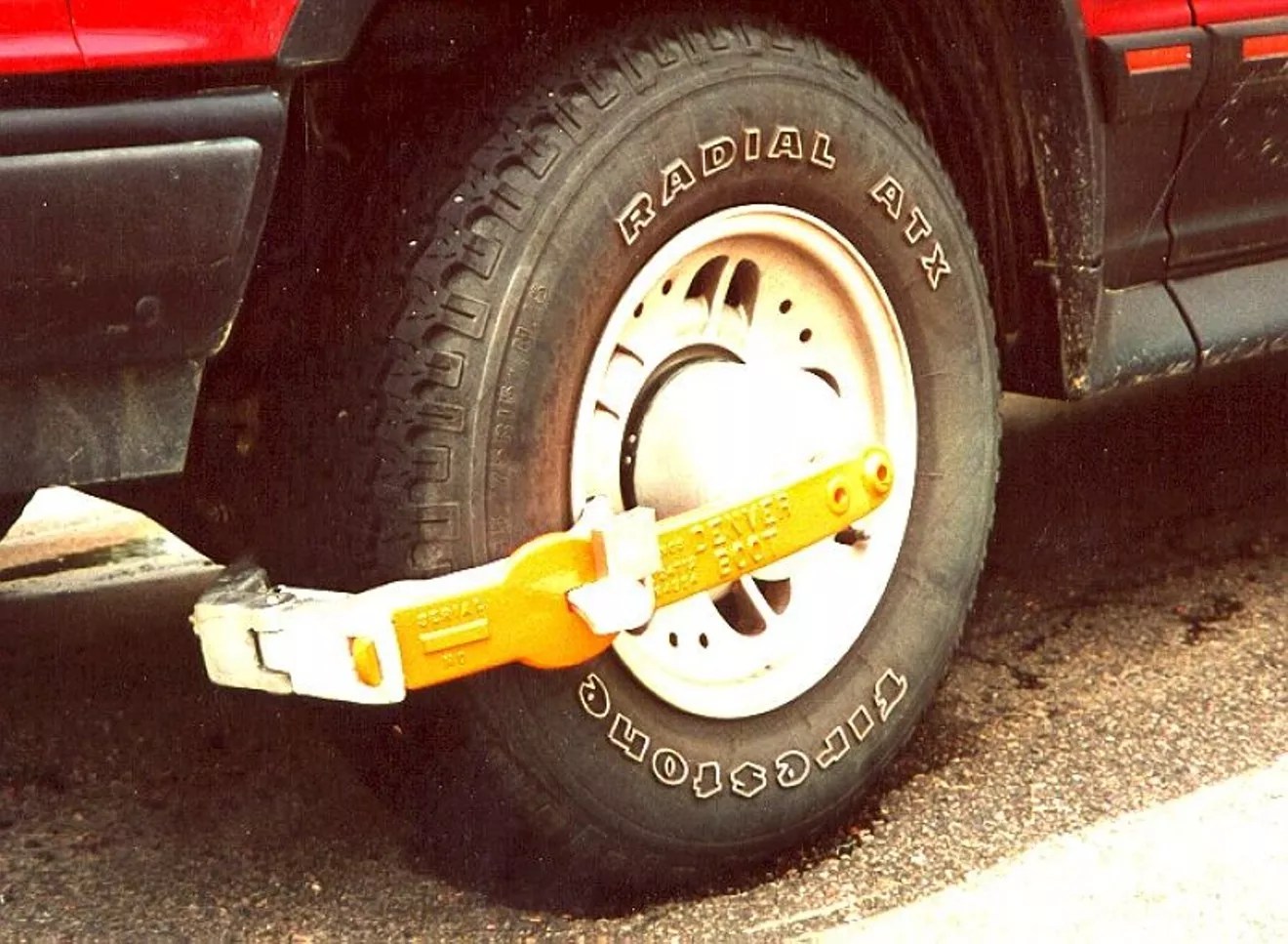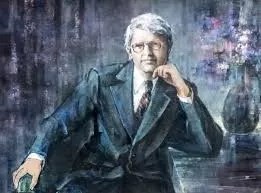
Getty Images/Westword Illustration

Audio By Carbonatix
On March 3, also known as 303 Day, it’s time to dial into some of the ways that Colorado has made its mark on this country.
One of the original 86 area codes created by AT&T and the Bell System in 1947, 303 initially covered the entire state of Colorado. In 1988, a geographic split led to the addition of a second area code: 719, which is used in a large swath of counties south and east of the metro area. As the state grew, the 970 area code was added in 1995 to take on the rest of Colorado. When that couldn’t handle the continued growth, 720 was added as an overlay to 303 in 1998.
But even though the boom has slowed, Colorado found that it still didn’t have enough phone numbers, so in 2023 it introduced its fifth area code – 983 – to help cover the same area currently assigned to 303 and 720.
Still, 303 continues to represent the Centennial State. And in honor of 303 Day, we’re connecting you with ten creations that came out of Colorado and have made their mark across the country.
Food Inventions in Colorado

Humpty-Dumpty had a great idea: cheese on a burger.
Mark Antonation
The Cheeseburger
Legend has it that the first place to ever use the term “cheeseburger” to describe a beef patty covered with cheese and served on a bun was in Louisville, Kentucky. But it was a Denver restaurant owner who had the foresight to trademark “cheeseburger” – and the proof remains evident today.
Louis Ballast, owner of the Humpty-Dumpty Barrel drive-in burger joint that was once located at 2776 Speer Boulevard, trademarked the word “cheeseburger” in 1935. Though the eatery itself is long gone, there’s a monument to Ballast and his drive-in (which he claimed was the first in Denver, too) at the site, now home to a Key Bank location.
While you can’t eat a Humpty-Dumpty burger to celebrate this cheesy culinary accomplishment, other old-school burger joints in town offer a nostalgic fast-food experience. Get a throwback taste at favorites like Crown Burger on South Colorado Boulevard (go for the Royal, which is stacked with pastrami in addition to the standard toppings); Jim’s Burger Haven in Westminster and Thornton, where the buns are six inches wide; or Grandpa’s Burger Haven, a South Federal walk-up (order a double, at least).

The dish that personifies the Mexican-American experience, some say.
Molly Martin
Mexican Hamburger
It seems so obvious: using a tortilla instead of a hamburger bun to hold a beef patty, then tossing in some beans, maybe some cheese, and smothering it all with green chile, if you happen to like it hot. But according to Gustavo Arellano, the author of 2012’s Taco USA: How Mexican Food Conquered America, the Mexican hamburger is not only the best example of “Den-Mex” cuisine, it’s the best Mexican dish in the country.
While the Mexican hamburger was actually invented in Denver sixty years ago, at the long-gone Joe’s Buffet on Santa Fe Drive, its most noteworthy iteration is at the original Chubby’s Burger Drive In, at 1231 West 38th Avenue. Stella Cordova, who’d been a waitress at the burger joint, took it over in the late ’60s, turning it into a walk-up spot that served great Mexican-American food. Although Cordova passed on a decade ago and her place has since been replaced by a bigger building with an actual dining room, the Mexican hamburger at this Chubby’s continues to be “the dish that best personifies the Mexican-American experience, a monument to mestizaje,” Arellano proclaims.
Other Mexican dishes that got their start in Denver, according to Arellano: the fried taco, as currently served at Mexico City Lounge and El Toro, and the crispy chile relleno, a standout at La Fiesta, which celebrated its sixtieth anniversary at 2340 Champa Street last year.

Chipotle started small but became mighty.
Anthony Camera
Chipotle
The 850-square-foot restaurant at the corner of East Evans Avenue and Gilpin Street doesn’t look like the birthplace of a revolution, but that’s exactly what it is. This is where the first Chipotle Mexican Grill opened in 1993, laying the groundwork for an entirely new niche in dining: tailor-made, high-quality meals built as customers ordered them, delivered at a price point that skews closer to fast food than to casual dining.
When Chipotle founder Steve Ells signed the lease for this tiny space, he had no inkling that he was about to launch a movement. He had no plans to create an eatery empire; he didn’t even think he’d expand his burrito shop beyond one address. He was merely looking for a way to raise some quick capital to fund a fine-dining restaurant. An art history major at the University of Colorado Boulder, Ells had gone on to the Culinary Institute of America “because I loved cooking and I thought it would be a nice departure,” he recalled when the chain turned twenty. “I didn’t think I would get into the restaurant business; I just thought it would be fun.” For inspiration, he looked at San Francisco’s big, Mission-style burritos.
But that first Chipotle eventually spawned a company that today oversees more than 3,000 locations in this country, and many more around the world. It also inspired countless copycats and hungry entrepreneurs to rush into what would soon be dubbed the “fast-casual” segment of the restaurant industry, radically reshaping how Americans eat in the process. Although the original spot was remodeled a few years ago, the basic concept remains the same…and delicious.
Product Inventions in Colorado

Fans think criticism of the shoe is a Croc of…something.
Catie Cheshire
Crocs
Hot or not? When it comes to Crocs, that question has been highly debated. Some fashionistas believe that the resin clogs with thirteen holes per shoe and a strap that can flip up or down are disgusting, while fans find joy in their comforting cushion and bright colors. Either way, Colorado is to thank (or blame) for the foamy footwear.
Over two decades ago, Lyndon Hanson and George Boedecker Jr., two CU Boulder grads, met up with friend Scott Seamans for a sailing trip. As Hanson detailed in a Parents story in 2009, Seamans had been trying to brand and sell a foam clog through a Canadian company and asked his buddies to try it out. The pals both thought the shoes were ugly, but after giving them a try, they realized just how comfortable they could be. Crocs debuted at a boat show in Fort Lauderdale in 2002, and in 2006, the product went public, to resounding success. Although the footwear has never been made here, Crocs has always been headquartered in Colorado: first in Niwot, then moving to Broomfield in 2020 during the pandemic, when sales were fast and furious.
And Crocs led to another Colorado invention: Boulder-based mom Sheri Schmelzer created Jibbitz, accessories that plug into the holes of Crocs to personalize the shoes. Crocs have also inspired numerous collaborators outside the state, from KFC models (don’t forget the chicken drumstick Jibbitz) to high-fashion models created with Balenciaga.

These boots are made for locking.
Clancy Systems
The Denver Boot
The most hated invention to come out of Colorado is surely the Denver Boot, “the wheel immobilization device that started it all,” according to the website of Clancy Systems, the Denver-based company that now owns the rights to this city’s notorious namesake.
The boot was the brainchild of one Frank Marugg, a man of many talents who was a pattern maker, inventor, teacher and violinist with the Denver Symphony Orchestra (he even made his own violin). In the early ’50s, some friends in the Denver Police Department – which then was responsible for issuing the town’s parking tickets – asked Marugg to apply some of those talents to designing a better way to handle parking scofflaws. Marugg started tinkering, and ultimately invented a clamp that could immobilize a car without harming it.
And the rest is history. Or hysteria, depending on when you happen to find your car wearing a Denver boot…and where, since it’s now in use around the world, thanks to the efforts of Clancy Systems, which bought the right to the boot from Marugg’s daughter, Grace Berg, back in 1985. “We used to sell them only to cities, because we were advertising in police journals and parking publications,” Clancy’s Liz Wolfson explained fifteen years later. “But since the internet became a source for sourcing everything, we have probably increased our volume tenfold, and we’re selling them to people who are booting construction trailers, monitoring private lots…. It’s kind of like this thing’s taken on a whole new life.”

This Christmas tradition lights up our lives.
Downtown Denver
Outdoor Christmas Lights
On Christmas Eve 1914, ten-year-old David Jonathan Sturgeon was in bed at his home at 4408 West 34th Avenue in Denver, too sick to go downstairs and join his family around the Christmas tree. David Dwight “D.D.” Sturgeon, a pioneering Denver electrician, wanted to cheer up his son, so he dipped lightbulbs in red and green paint, connected them to electrical wire, and hung them in a pine tree outside David’s window, brightening his holiday and inspiring people from miles away to come and marvel at the illuminated tree.
Although there had been a few earlier outdoor decorating attempts around the country, they dimmed compared to the glowing reports provided by Denver Post reporter Pinky Wayne, and enthusiastic city boosters of a century ago were soon touting this as the first illuminated outdoor Christmas tree. The next year, Sturgeon neighbors decorated their trees, too, and the tradition lived on. (Sadly, young David did not; he succumbed to a different illness.)
Denver was soon in the spotlight of a national craze. D.D. Sturgeon was dubbed the “Father of Yule Lighting.” Wayne organized the country’s first outdoor-lighting contest in Denver in 1918, attracting hundreds of contestants. Those efforts inspired manufacturers to come up with affordable products that would work indoors and outdoors regardless of the weather, and as a result, electric billboards across the country began to flash with colored globes, giving rise to flashing neon signs. By 1919, the official city electrician, John Malpiede, had caught the fever and replaced the lights in Denver Civic Center with colored globes of red and green for the holidays. The next year, he put an illuminated Christmas tree in front of the Colorado State Capitol. After that, he kept scavenging for items – and buildings – to add to his holiday display.
In 1926, Mayor Ben Stapleton gave him the okay and $400 to illuminate the front of City Hall, and by the late 1920s, Denver had become known as the “Christmas Capital of the World.” In 1945, NBC broadcast a tribute to Denver and the Sturgeon family for having created a beautiful holiday tradition.
Let there be lights.
Social Inventions in Colorado

Clela Rorex drew the line at horse marriage.
Out Boulder County
Gay Marriage
In 1975, Clela Rorex became not just the first Boulder County clerk to issue a same-sex marriage license, but the first clerk to do so anywhere in the country. She didn’t plan to become a pioneer; initially, she didn’t even plan to run for clerk at all, but when the position became open, she decided to do so.
Soon after she won, two men – Dave McCord and Dave Zamora, who’d been rejected for a marriage license in Colorado Springs – came to Boulder and applied for one. “They asked if they could have one,” recalled Rorex a few years ago, “and I said, ‘I honestly don’t know. I don’t know if I can do this, but I will find out and get back with you.'” She consulted with the DA’s office, she said, and “they researched Colorado marriage code and wrote an opinion to me that the marriage code did not, at that time, say anything about whether a marriage should be between a man and a woman. They said, ‘It doesn’t specify. So if you want to go ahead and issue a license, you’d be within your legal right to do so. It’s your decision.'”
So she called up the Daves and issued them a license, “because I felt deeply that it was just a fairness thing,” she recalled. Her act made national news, and also inspired a few pranksters, including one fellow who showed up at the office wanting to marry his horse. Rorex came up with a good reason for denying him: The horse was underage.
Forty years would pass before the U.S. Supreme Court officially recognized marriage equality. Three years later, Colorado elected the country’s first openly gay governor, who married his partner in 2021, a year before Rorex passed away.

It’s been a bumper crop since day one of legalization.
Thomas Mitchell
Retail Marijuana
Recreational marijuana use is much older than Colorado itself, but actually legalizing, permitting and selling it on a retail level takes a lot of work, creativity and courage. And in 2012, there was enough of that in the state to make history, with voters approving Amendment 64, which called for making recreational cannabis use legal in the state. Then-Governor John Hickenlooper enacted the law in December 2012, allowing for stores that sold recreational marijuana to open on January 1, 2014 – beating Washington State by seven months.
Colorado hasn’t looked back since. Although there have been some bumps in the road – medical marijuana patients got shafted, and the grassroots passion for the plant was replaced by commercial interests in hollow suits – such challenges were inevitable. On the whole, Colorado’s cannabis space has plenty to be proud of, including over $15 billion in overall dispensary sales and almost $2.9 billion in state tax revenue through 2024 that has gone toward schools, youth education and affordable-housing projects – and that’s not counting the hundreds of millions in local tax revenue. Since Colorado led the way, 23 more states and Canada have legalized recreational marijuana.
By the way, the 420 area code has not yet been claimed, according to the North American Numbering Plan Administrator. That would be a smokin’ addition to this state.

Richard Lamm, guardian of women’s rights.
colorado.gov
Right to Choose
Richard Lamm was a brand-new legislator representing a largely Catholic district of Denver when he brought up the hot topic of abortion in the Colorado General Assembly back in 1967. “I thought I was committing political suicide,” Lamm recalled a few years ago. “I introduced that bill about six weeks into stepping into the state legislature. I was not at all looking to a political career – but look at what I was really risking.”
What the accountant/attorney was risking turned out to be a major political career that changed the future of this state, with three terms as Colorado governor, a quixotic run for president as the Reform Party’s candidate in 1996, and a longtime role as the University of Denver’s co-director of the Institute for Public Policy Studies until he retired shortly before his death in 2021. Lamm had gotten interested in the tough topic of abortion back in 1963, when he and wife Dottie were in Peru and learned that a local Catholic priest was distributing condoms to his congregation: Although birth control was against the Church’s teachings, it was better than the botched abortions that were filling local hospital beds, the priest told them. Lamm knew that illegal abortions were being done in this country, too, and when he returned to Denver, he decided it was time to bring the practice out into the open – and under the protection of the law.
With the bill that Lamm pushed through a Republican-controlled legislature, an abortion still required the consent of a woman’s parents or spouse and a three-doctor panel – but for the first time, the procedure could be done safely and legally in this country, right here in Colorado. After Republican governor John Love signed that bill into law in 1967, Time magazine featured Lamm in a story on hot-button political issues, and he testified in a half-dozen states that were considering similar legislation, including New York.
Today, Colorado remains a safe haven for women…for now.

Nevertheless, they persisted.
History Colorado
Women’s Suffrage
Once again, Colorado was there first: Twenty-seven years before the Nineteenth Amendment was ratified in 1920, Colorado became the first state in the Union to give women the right to vote; a popular referendum – in which only men voted – passed in 1893. (Technically, Wyoming beat Colorado to the punch, but it was a territory when it granted women suffrage in 1869.)
Still, women didn’t get the vote in this state without a fight. While some delegates to the 1875-76 convention on statehood pushed for women’s suffrage to be included in the Colorado Constitution, their efforts failed. So did the first popular referendum on the issue in 1877, the year after Colorado joined the Union; at the time, Presbyterian preacher Reverend Thomas Bliss dismissed the suffrage movement as “bawling, ranting women, bristling for their rights,” according to the Colorado Encyclopedia.
And those women continued to bawl, and brawl, for another sixteen years before Coloradans (male, again) finally approved an act giving women the right to vote “in the same manner in all respects as male persons are.”
This story has been updated from the version published on March 3, 2023.